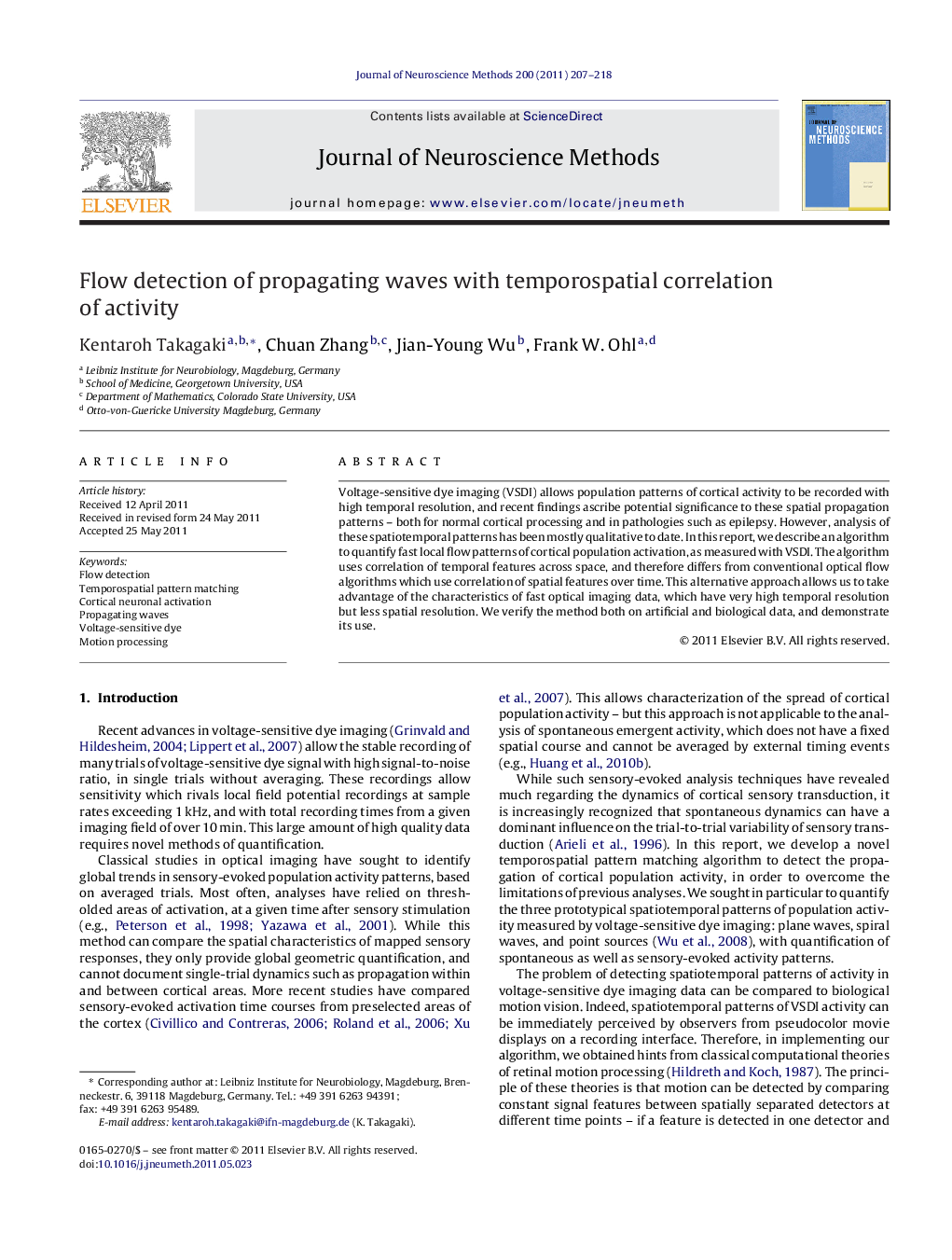| Article ID | Journal | Published Year | Pages | File Type |
|---|---|---|---|---|
| 4335289 | Journal of Neuroscience Methods | 2011 | 12 Pages |
Voltage-sensitive dye imaging (VSDI) allows population patterns of cortical activity to be recorded with high temporal resolution, and recent findings ascribe potential significance to these spatial propagation patterns – both for normal cortical processing and in pathologies such as epilepsy. However, analysis of these spatiotemporal patterns has been mostly qualitative to date. In this report, we describe an algorithm to quantify fast local flow patterns of cortical population activation, as measured with VSDI. The algorithm uses correlation of temporal features across space, and therefore differs from conventional optical flow algorithms which use correlation of spatial features over time. This alternative approach allows us to take advantage of the characteristics of fast optical imaging data, which have very high temporal resolution but less spatial resolution. We verify the method both on artificial and biological data, and demonstrate its use.
► A new algorithm which can better describe local propagation patterns of cortical activity in voltage-sensitive dye data. ► Propagation patterns are decomposed in each local area into four templates, x-translation, y-translation, source and rotation. ► This algorithm takes better advantage of the characteristics of high sensitivity voltage-sensitive dye imaging (VSDI) data, which has high temporal resolution but limited spatial resolution. ► Can reliably identify and quantify propagation patterns on a single trial basis.
